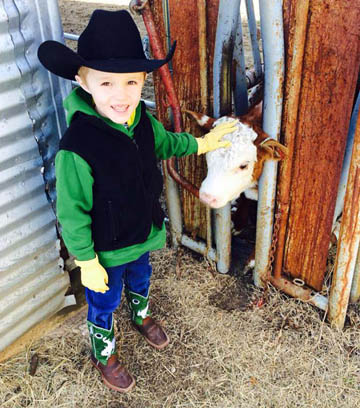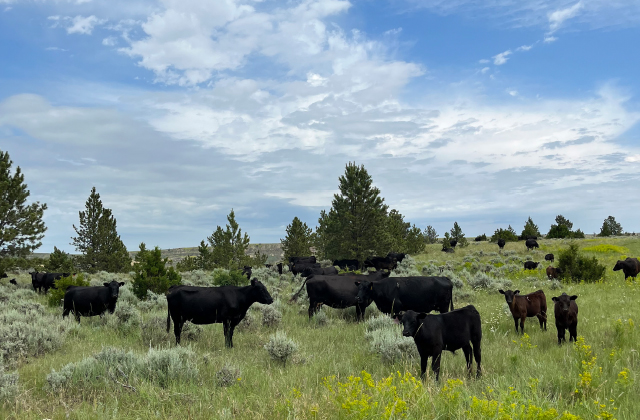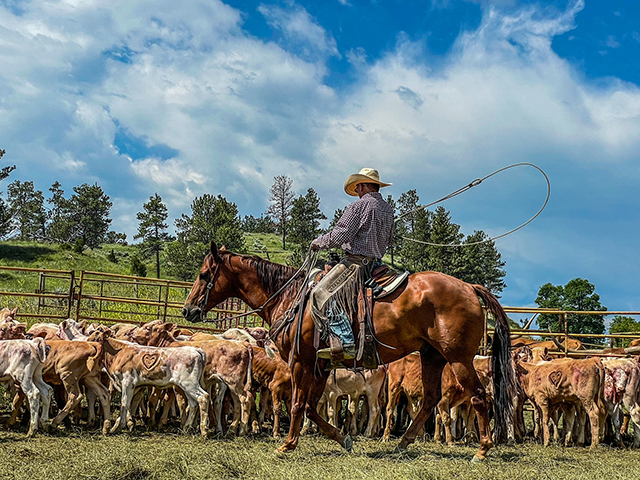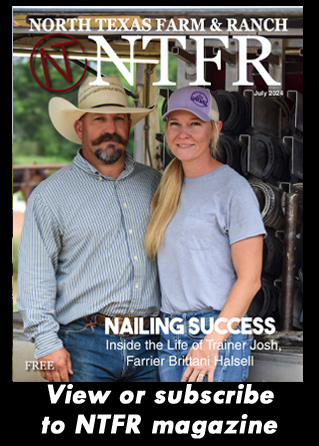Farm & Ranch
Let your babies grow up the be cowboys

By contributing writer Krista Lucas
People have heard the popular Winston Churchill saying, “There is something about the outside of a horse that is good for the inside of a man.” Horses and ranch life can shape a child in more positive ways than one.
Being involved with agriculture in any form can help the development of a child physically, emotionally and socially. Maturity can be gained through learning how to work with animals, as well as people.
Horses are used daily on a ranch, and many little boys and girls dream of having their own. An equine friend can be an instrumental tool in the development of a young child.
Jex Taylor, a four-year-old boy from Celina, Texas, has been around ranch life and horses his entire life by visiting his grandparents’ ranch.
He has learned how to brush, saddle and even ride a horse. His mom, Lindee Taylor, said his improvement in cognitive abilities such as language development was due to his involvement with horses.
“A speech therapist would constantly drill him with different labeled objects, but he wouldn’t interact,” Taylor said. “But when he started going to the barn, he was really interested every time.”
Horses helped Jex express himself. As a toddler, he rarely made any sounds, until he became involved with the horses and tractors on the ranch. He soon learned to make tractor noises and could name several horse breeds. To read more pick up the April 2014 issue of North Texas Farm & Ranch.
“He went from being almost nonverbal,” Taylor said, “to driving down the road and pointing out different types of horses.”
Jex became more observant by looking at horses and cattle, as well as wanting to communicate and be active on the ranch.
“He used to always want to sit in my lap everywhere,” Taylor said. “Now he wants to go to the barn.” When asked which horse is his favorite on the ranch, Jex replied, “Ace!”
“When he was three, every time I would ask, ‘What do you want for Christmas?’ he would say a horse,” Taylor said.
Ranch activities such as feeding cattle, including a 26-year-old longhorn, gave Jex the freedom to interact with others. Taylor said her son was excited to take a picture of the cow to show at his daycare.
Jex is just one of many boys and girls who have benefited from agriculture. Now there are even camps offered for children to participate in the rural way of life. There are therapeutic camps, riding lesson camps, and competitive rodeo camps.
Farm & Ranch
Ag Elsewhere: Wyoming

By Tressa Lawrence
Ranchers across northeast Wyoming and the surrounding areas saw record moisture levels in 2023. The year 2024 has seen significantly less moisture to date.
Farm & Ranch
Ag Elsewhere: Montana

By Lindsey Monk
People are finishing up brandings. Here, Danny Walter is shown getting it done.
Farm & Ranch
Animal Disease Traceability

By Barry Whitworth, DVM
On July 6, 2020, the United States Department of Agriculture Animal and Plant Health Inspection Service (APHIS) posted in the Federal Register a proposal that radio frequency identification tags be used as official identification for cattle and bison. Following a period for public comment, the USDA APHIS released a statement on April 24, 2024, with the amended animal disease traceability (ADT) regulation for cattle and bison. The full press release may be found at https://www.aphis.usda.gov/news/agency-announcements/aphis-bolsters-animal-disease-traceability-united-states. Under the new rule, cattle and bison will need to be identified with tags that are both visual and electronic.
The USDA defines ADT as knowing where diseased and at-risk animals are, where they have been, and when the animal disease event took place. A system that allows for efficient traceability of livestock in the United States is essential for animal health and reducing the economic effect of a foreign animal disease outbreak and other diseases on livestock producers as well as others whose well-being depends on livestock production.
To read more, pick up a copy of the July issue of NTFR magazine. To subscribe by mail, call 940-872-5922.
-

 Country Lifestyles1 year ago
Country Lifestyles1 year agoScott & Stacey Schumacher: A Growth Mindset
-

 Country Lifestyles7 years ago
Country Lifestyles7 years agoStyle Your Profile – What your style cowboy hat says about you and new trends in 2017
-

 Equine10 months ago
Equine10 months agoThe Will to Win
-

 HOME7 years ago
HOME7 years agoGrazing North Texas – Wilman Lovegrass
-

 Country Lifestyles4 years ago
Country Lifestyles4 years agoAmber Crawford, Breakaway Roper
-

 Outdoor9 years ago
Outdoor9 years agoButtercup or Primrose?
-

 Country Lifestyles8 years ago
Country Lifestyles8 years agoDecember 2016 Profile, Rusty Riddle – The Riddle Way
-

 Country Lifestyles8 years ago
Country Lifestyles8 years agoJune 2016 Profile – The man behind the mic: Bob Tallman






